Tuesday, August 20, was the bimonthly bird survey at Shollenberger Park. The team set out at 7 AM into a cool and cloudy morning.
One of the first birds spotted was this Common Gallinule with its brightly colored shield, bill, and legs. Though this species is easier to see than most others in the Rallidae family – in typical rail fashion, the bird slinked back towards the vegetation as we approached.

Common Gallinule
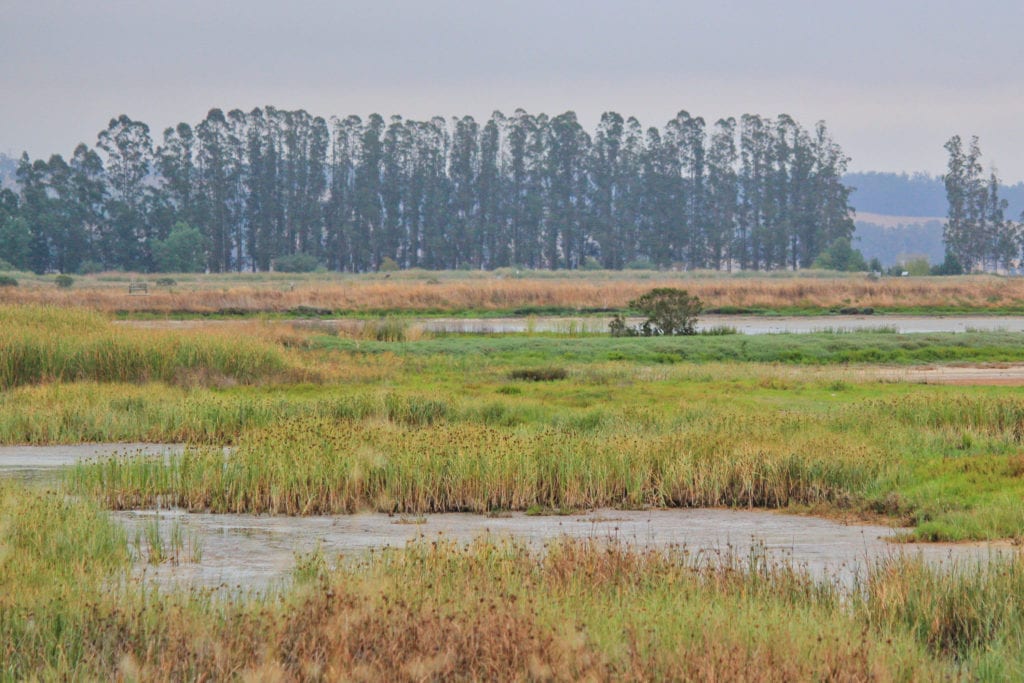
Looking southeast towards Ellis Creek
Black-necked Stilts and Snowy Egrets were abundant this August survey. We spied a stilt attempting to infiltrate a group of Snowies.
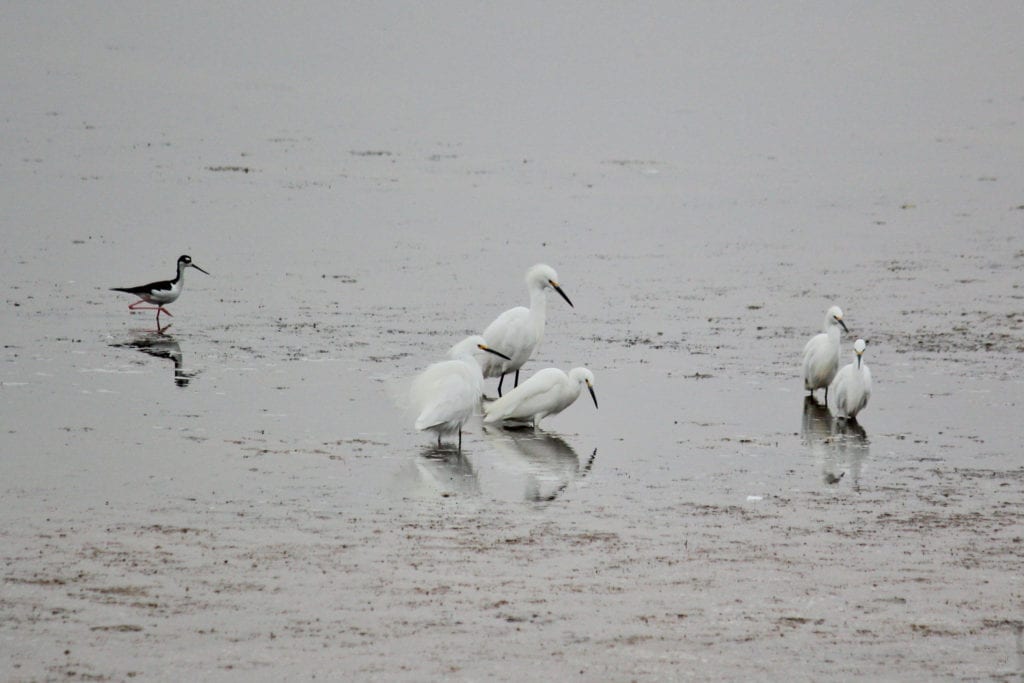
Oh, hey guys – so this is where the party’s at!
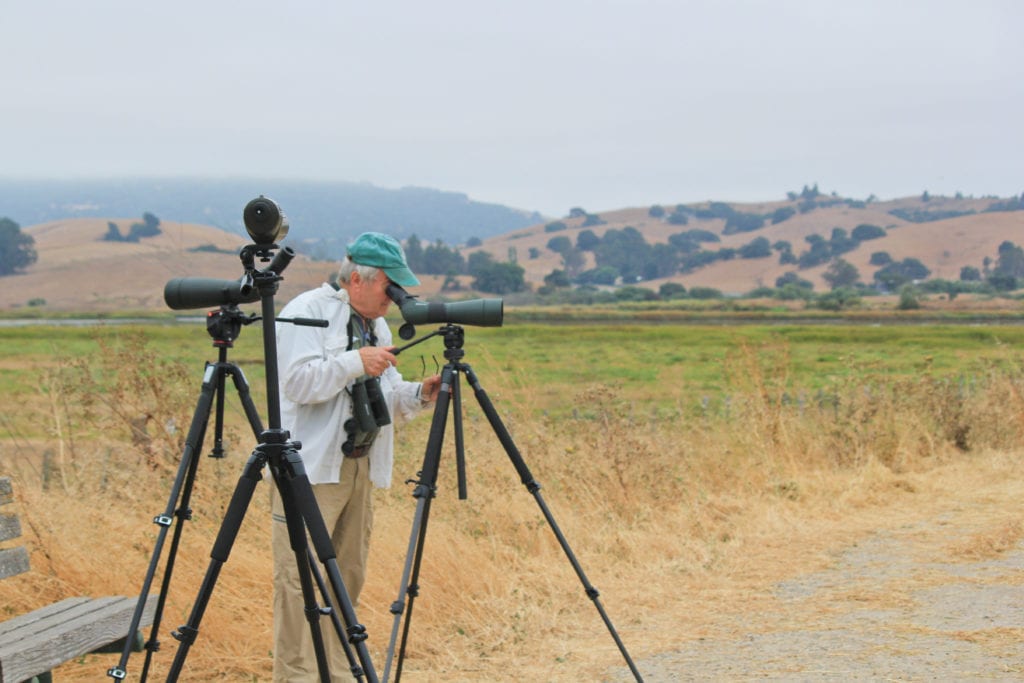
Survey coordinator Len Nelson scoping the mudflats
Having many pairs of eyes ensures no bird goes uncounted – we’ve got all directions covered!
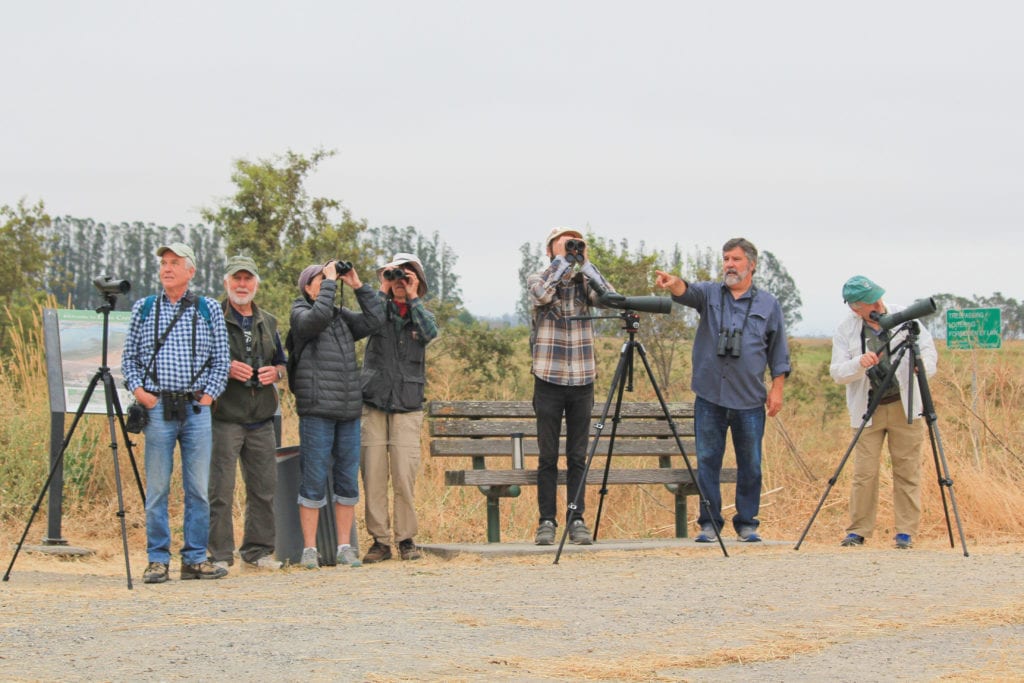
[L-R] Malcolm, Andy, Mary, Barbara, Miles, John, Len (not pictured – Teresa)
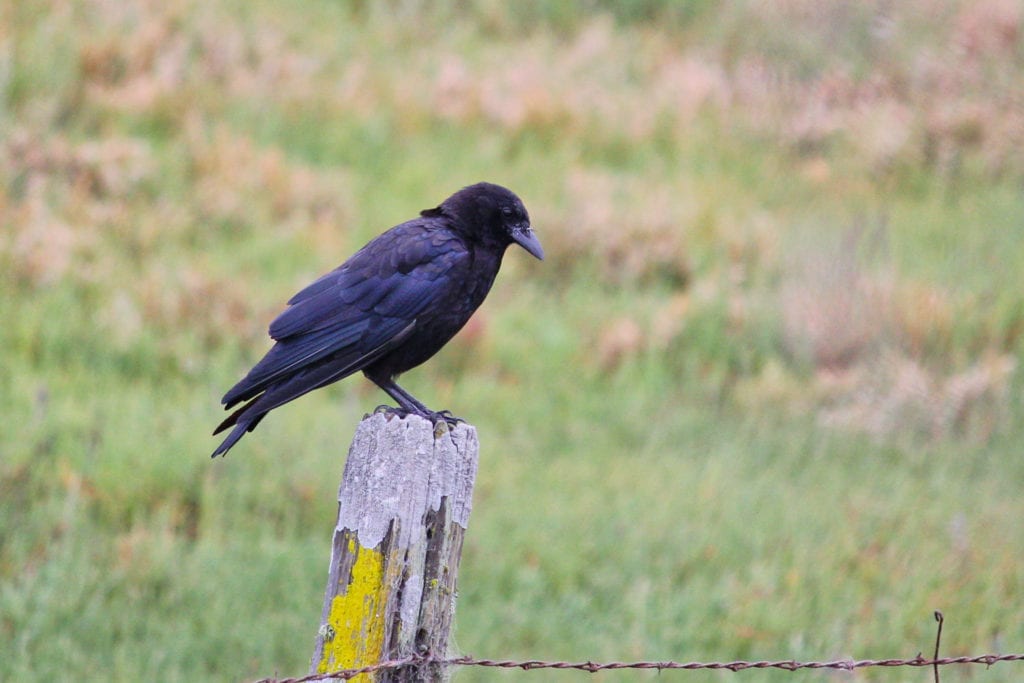
American Crow
After making a raucous landing with a few of its brethren, this Killdeer carefully inspected the shoreline.
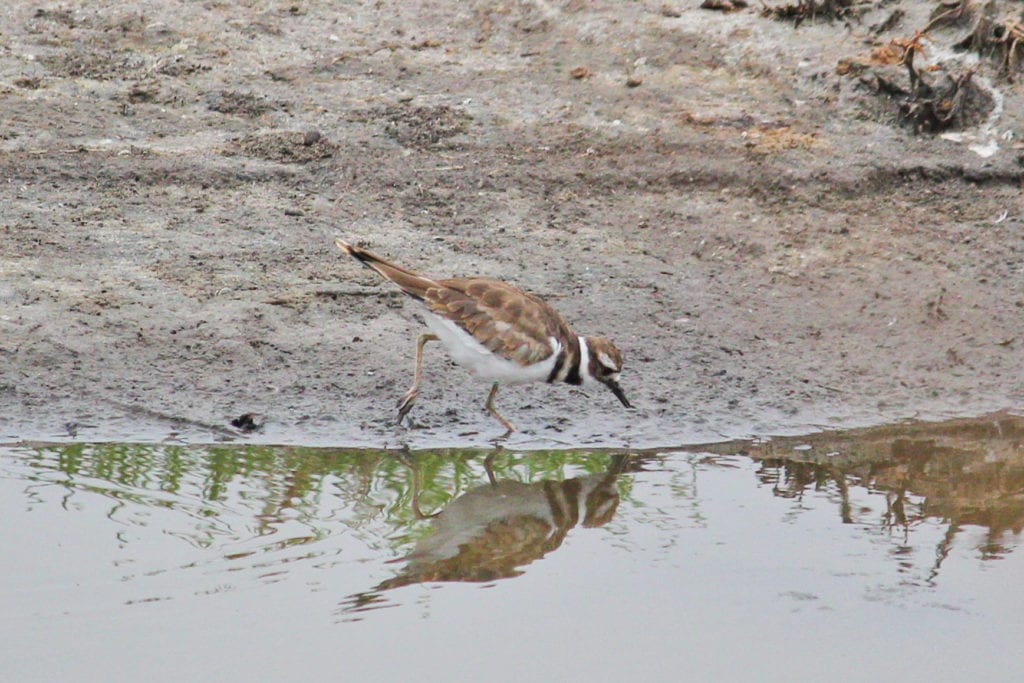
Killdeer
Our group counted 102 Black-necked Stilts, including several juveniles like this one below. Juveniles typically have faint scalloping on their upper parts and less vibrantly colored legs.

Black-necked Stilt juvenile
Black-necked Stilts are often one of the more vocal birds of Shollenberger. Listen to their persistent, squeaky “pip-pip-pip!“-s below.
Peeps are back in town! Though we came upon both Least and Western Sandpipers during our count, Leasts were more abundant. Juvenile sandpipers begin to appear in large numbers throughout the county in August.
In late summer and early fall, crisp and fresh plumage (like these three birds below) is a helpful clue in aging shorebirds – as well as many other types of birds.
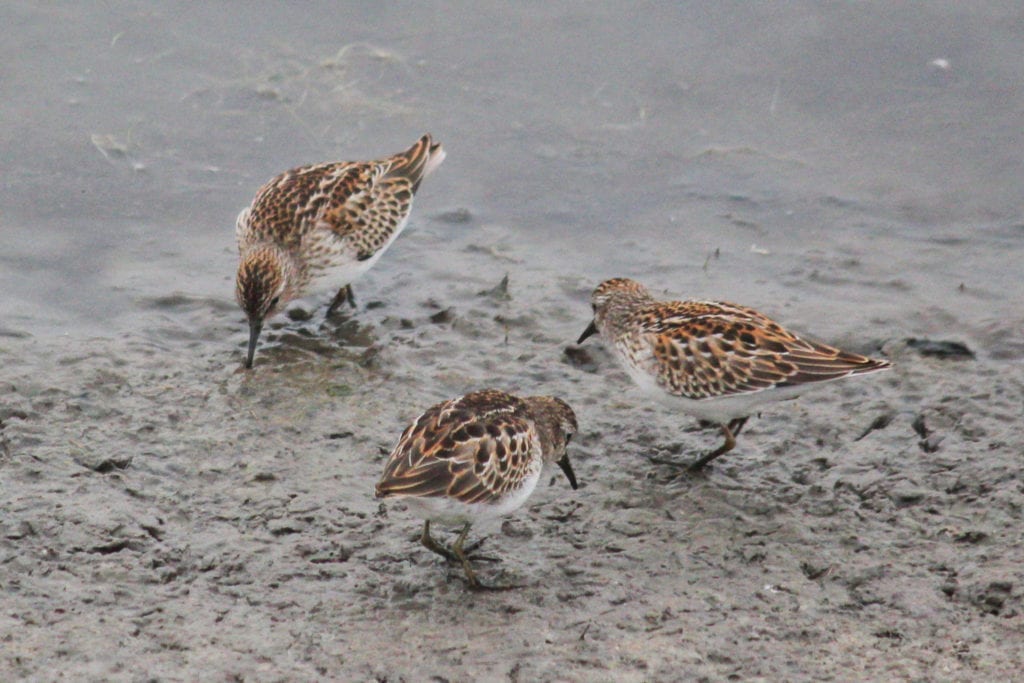
Least Sandpiper juveniles
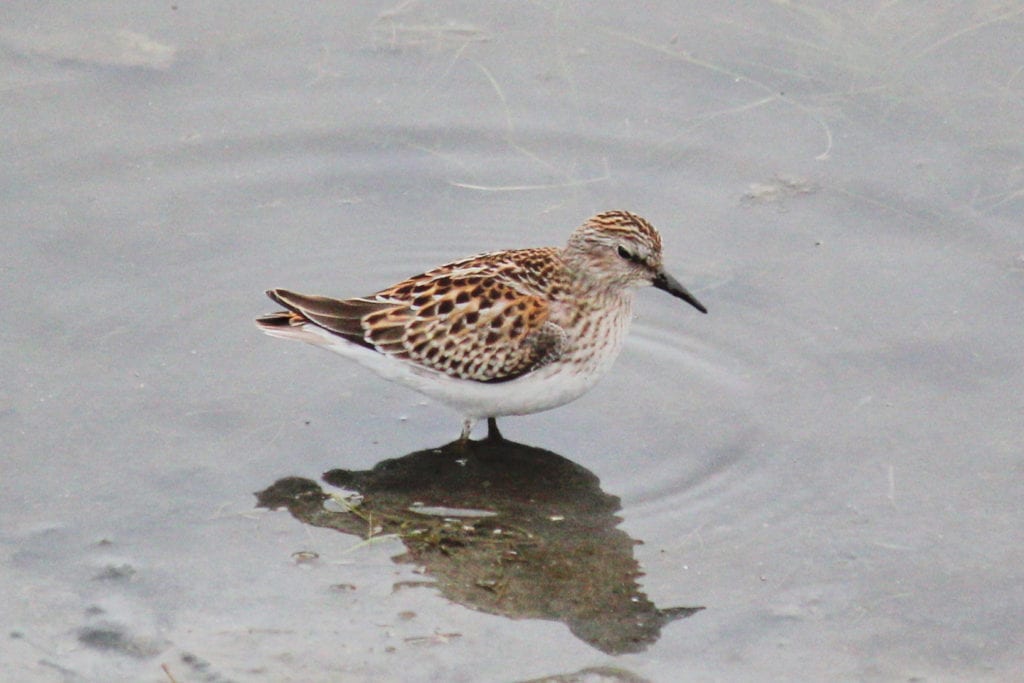
Least Sandpiper juvenile
The Red-necked Phalarope is another member of the Scolopacidae family (sandpipers) we’ve seen a lot across the County lately – the Shollenberger ponds were no exception.
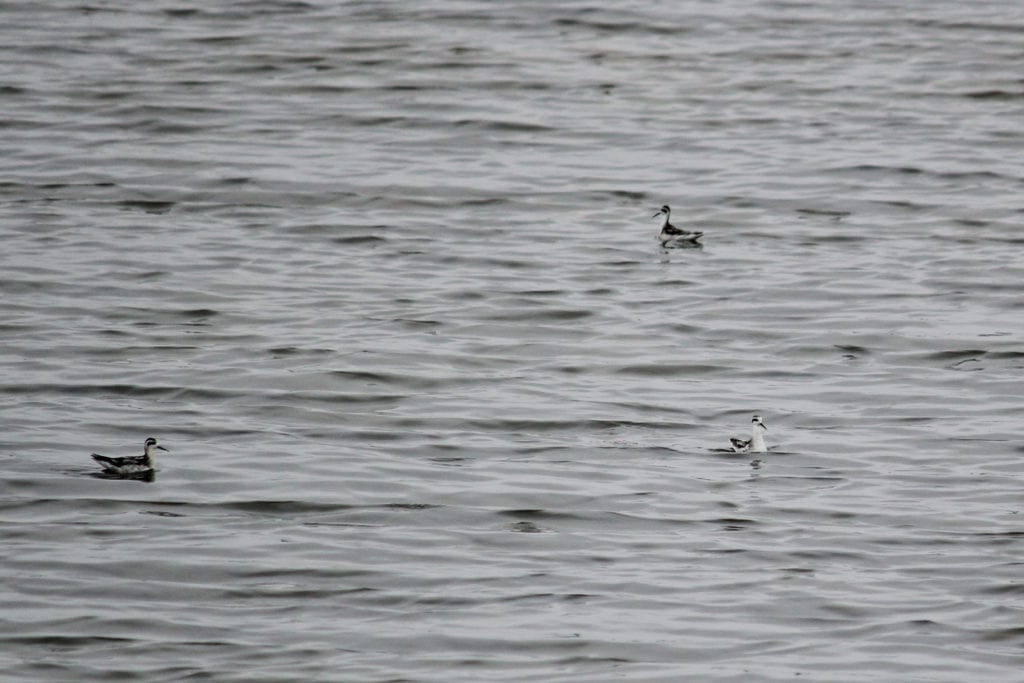
Red-necked Phalaropes
Common Yellowthroats seemed to be bopping about at every turn.

Common Yellowthroat
This normally skulky Marsh Wren appeared briefly to sing atop a fence post.
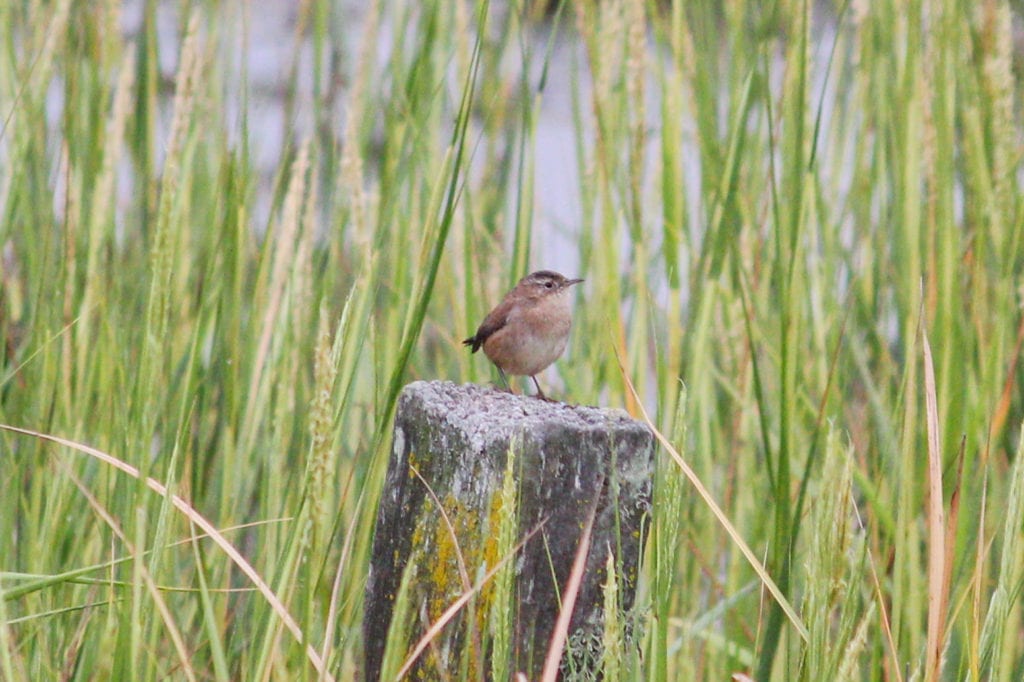
Marsh Wren
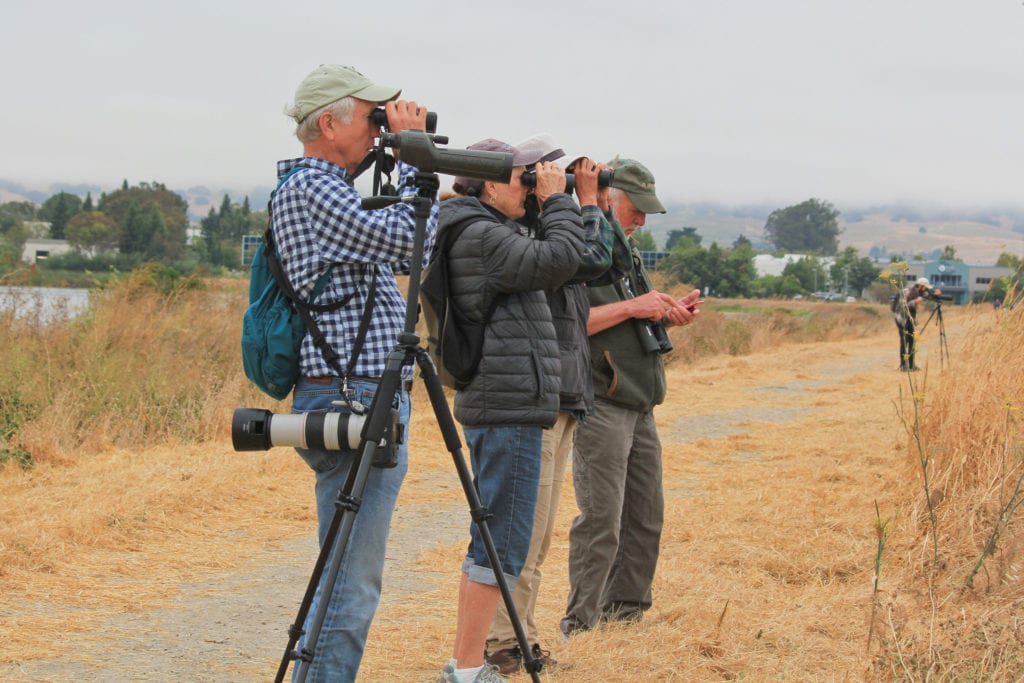
Some of PWA’s dedicated volunteers
The trail heading south from the Point Blue Conservation Science building is a great place to look and listen for rails. Though we didn’t catch any glimpses, we did hear multiple Virginia Rails – like this one below.
This juvenile Lesser Goldfinch gave us a nice look at its back feathers as it followed its parent around.
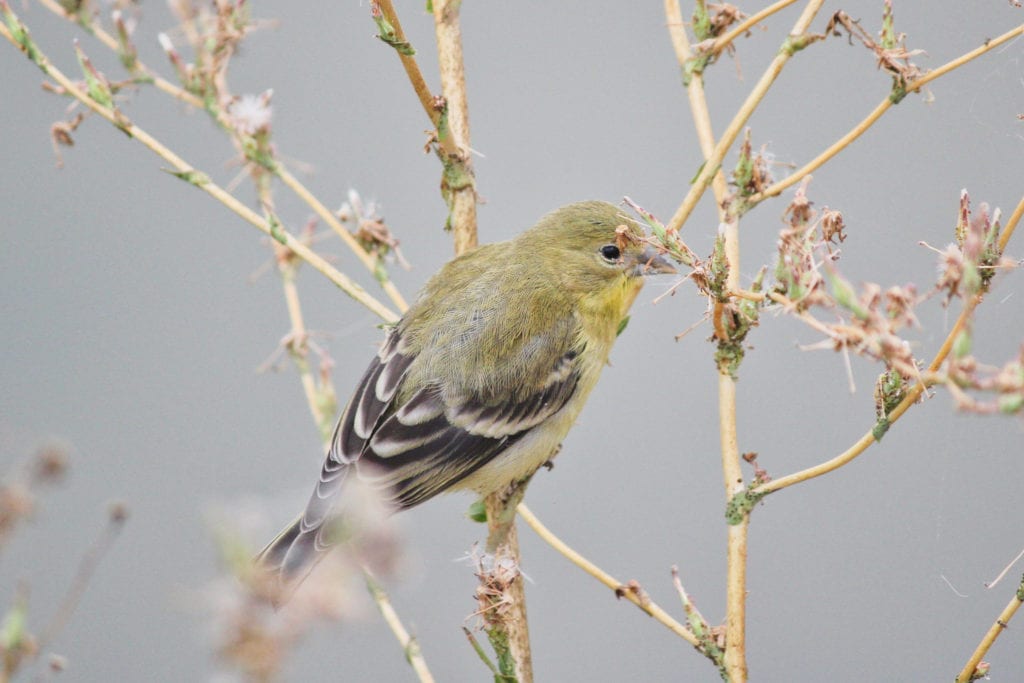
Lesser Goldfinch juvenile
From a small platform above the Petaluma River, we were surprised to discover a concealed Turkey Vulture among the reeds. Who startled who?!
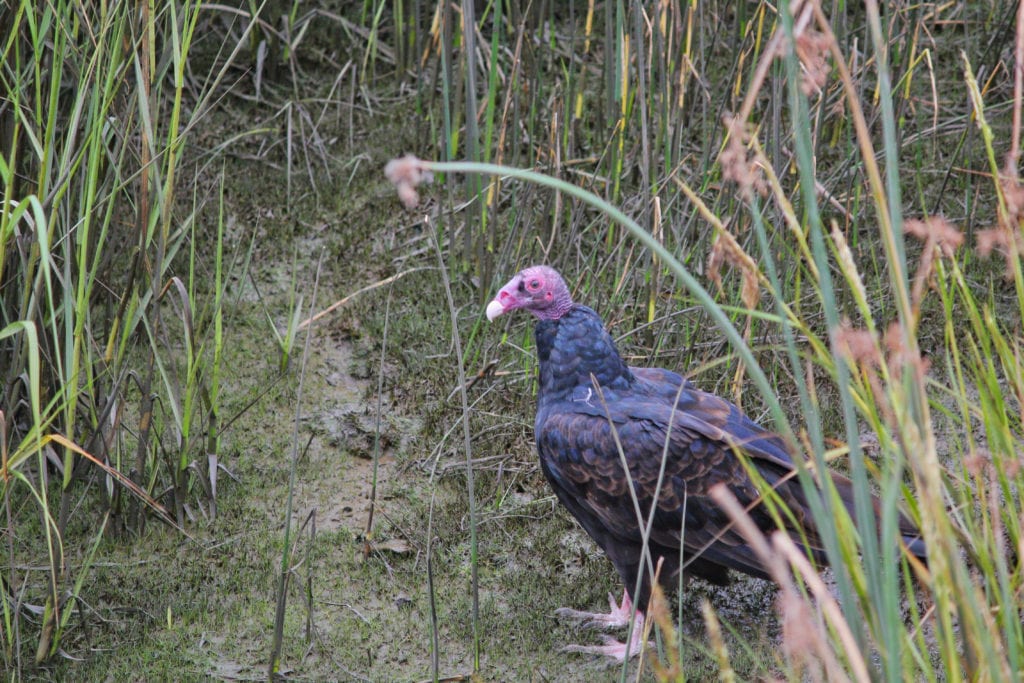
Turkey Vulture
Along the trail, count leader Andy LaCasse stopped to inspect skunk remains.
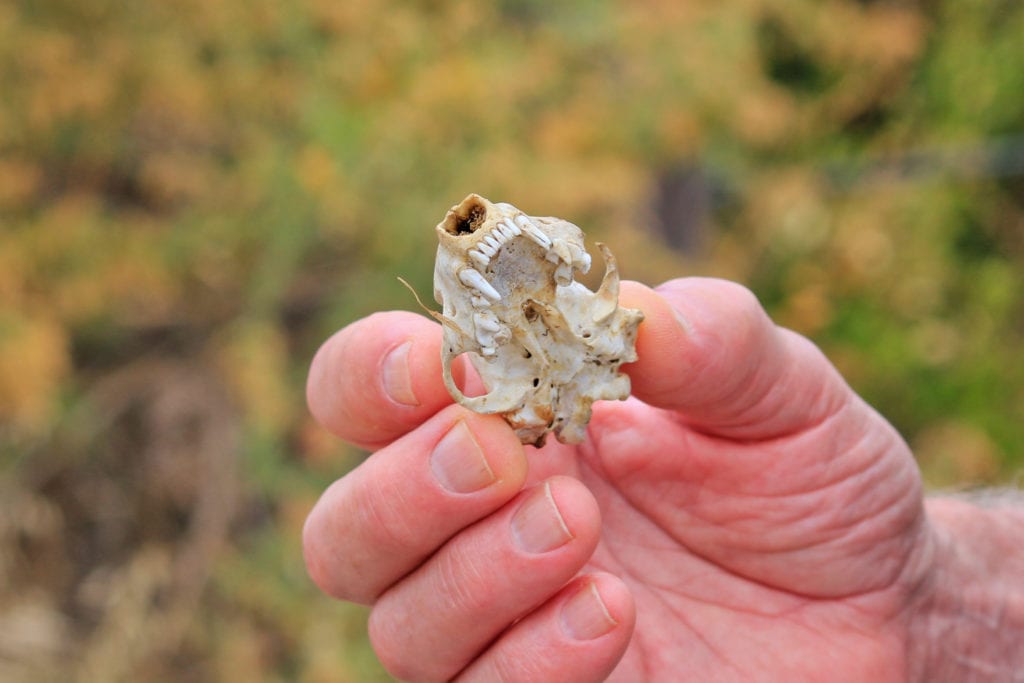
Pristine skull of a Striped Skunk
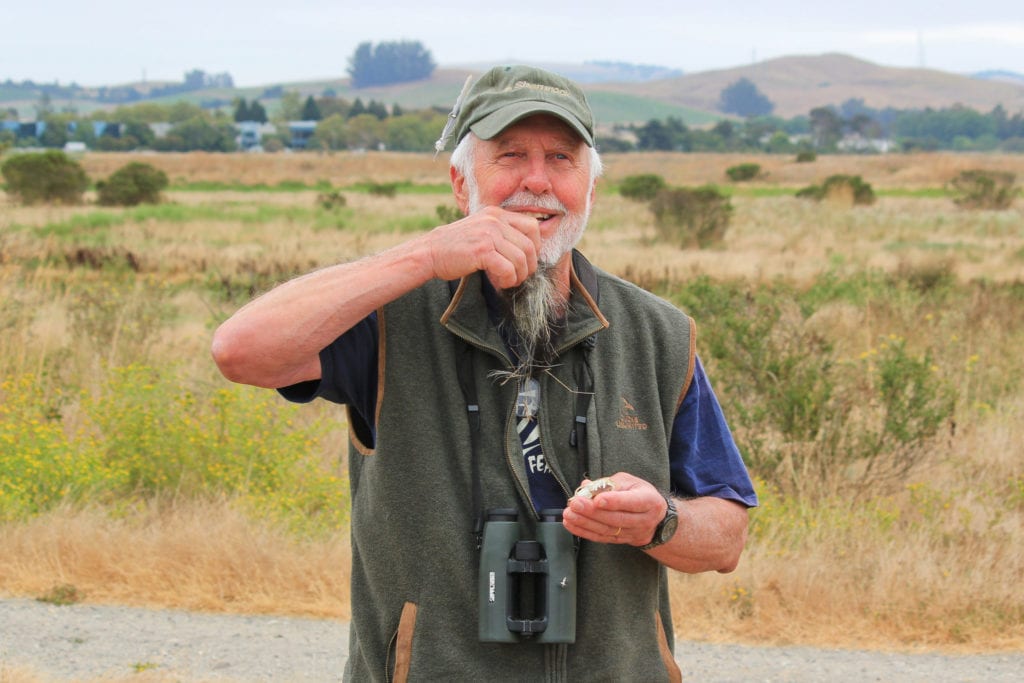
A good beard extension – whaddya think?
These young deer along the riverbank of Adobe Creek are just one of many creatures that call the Petaluma wetlands home. Visit PWA’s website to discover three ways you can help support our local wetlands.
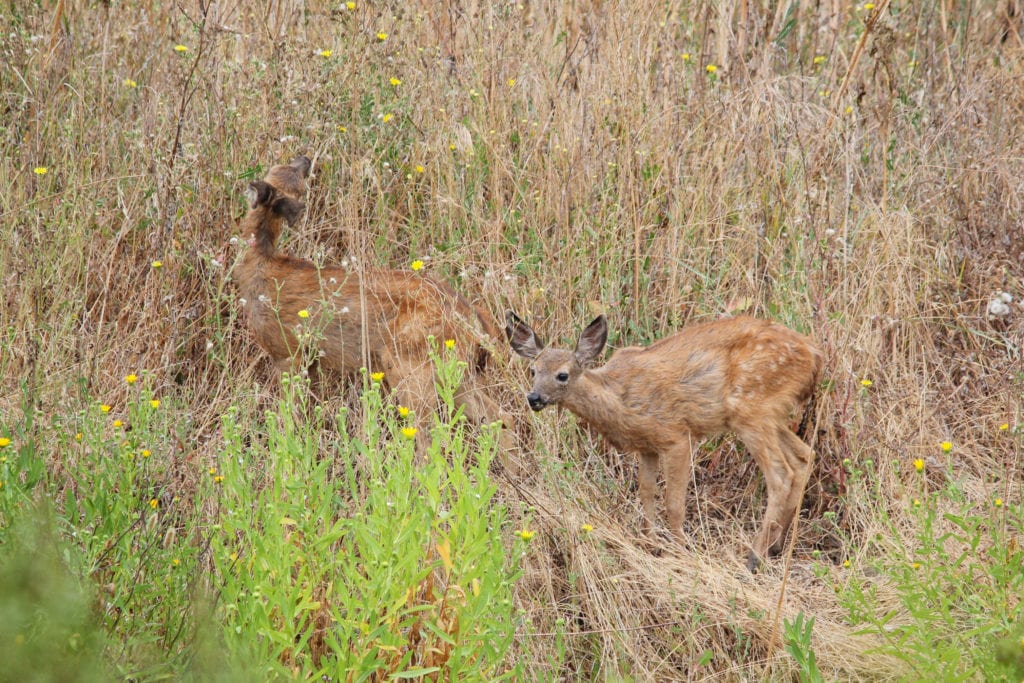
Black-tailed Deer fawns
Despite some noise and activity from a work crew cutting vegetation along the walking paths, our group had an excellent count day at Shollenberger. By the end of the morning, the team had tallied 66 species for PWA’s August 2019 survey – the highest August species count in 8 years!
This has been your in-the-field recap of the PWA’s August bird survey. These monthly bird surveys are just one of the many ways the PWA fulfills its mission statement:
Dedicated to the stewardship, restoration, and expansion of wetlands and associated wildlife habitats.
We’re Miles and Teresa Tuffli of I’m Birding Right Now. We are PWA members and bird survey volunteers. Check back for future reports!
If you have any questions about this particular count or if you’re interested in participating in future counts, please contact the coordinator/compiler for these surveys, Len Nelson, at lennelsn@comcast.net.


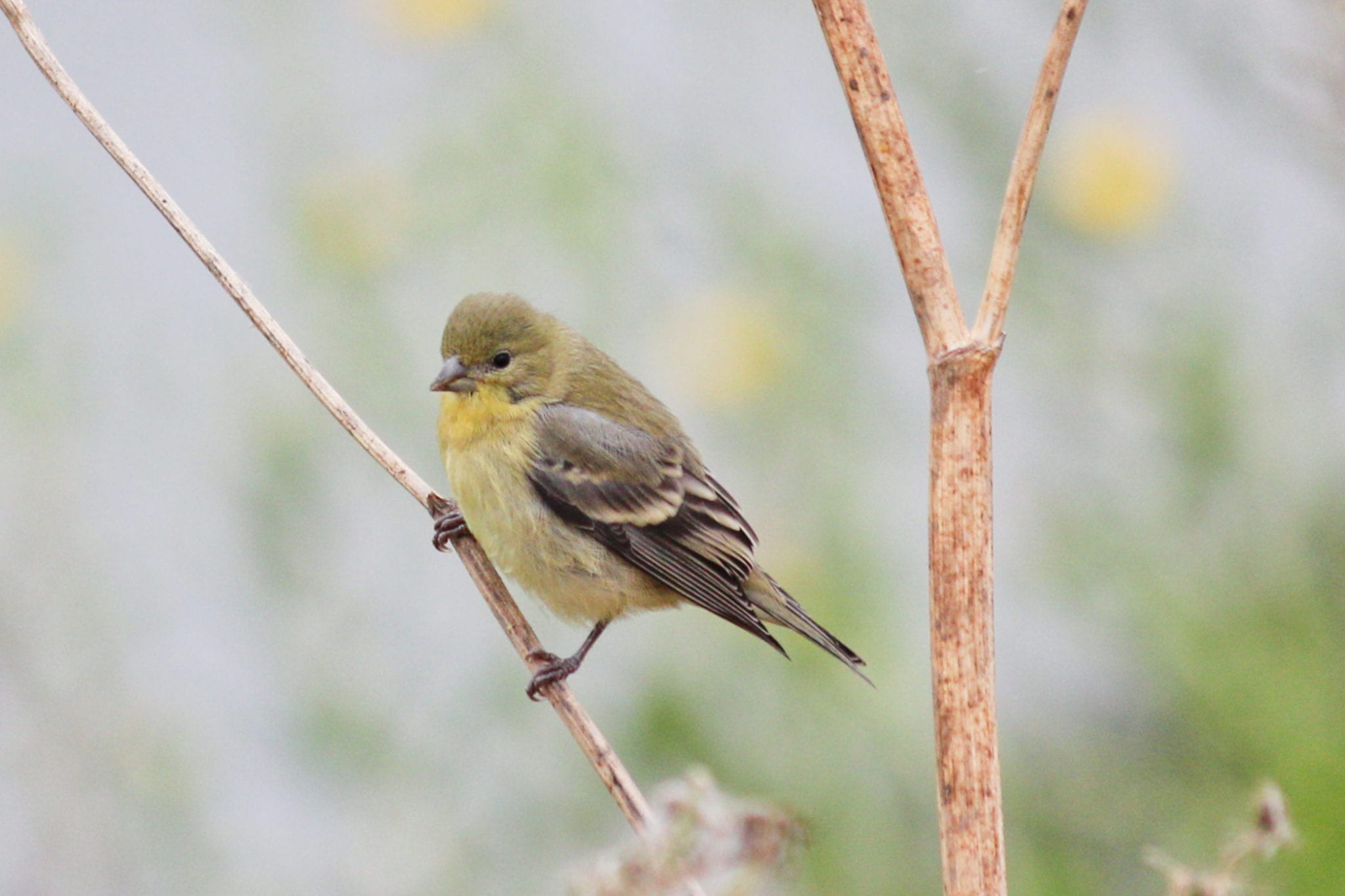
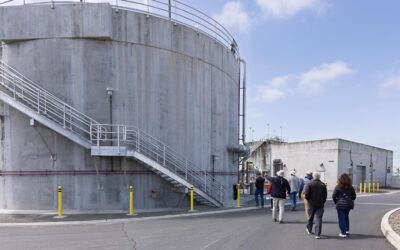
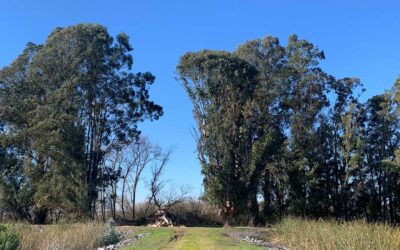
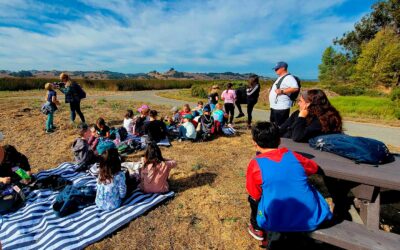
Very nicely done, as always, and while recording too!
Thank you,
Len